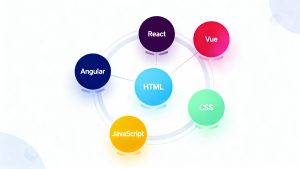Artificial intelligence continues to reshape the landscape of software quality assurance. One of the most talked-about applications is AI usability testing—a field that promises to revolutionize how products are evaluated for user experience. However, beneath the hype, there are misconceptions, limitations, and practical considerations that every QA team should understand.
The Power and Limits of AI in Usability Testing
AI excels at processing vast amounts of data, detecting patterns, and automating repetitive tasks. In usability testing, it can analyze user sessions, identify common behaviors such as repeated navigation loops or rage clicks, and highlight potential friction points in an application. AI tools can also generate test scenarios, analyze user feedback, and benchmark designs against industry standards.
Despite these capabilities, AI cannot replicate human creativity or intuition. It lacks the ability to fully grasp context, understand user intent, or interpret emotional nuances. For example, while AI can flag a spike in drop-offs during a checkout process, it may not recognize that confusing terminology or user frustration is the root cause. This underscores the importance of balancing AI-driven insights with human expertise1.
Understanding Usability, User Experience, and User Interface
To appreciate the role of AI in usability testing, it is essential to revisit the fundamentals of user-centered design.
Usability in Software
Usability refers to how easily and efficiently users can achieve their goals within a product. Core criteria include:
- Learnability: How quickly new users can understand and navigate the interface.
- Efficiency: How fast users can perform tasks.
- Memorability: How easily returning users can recall how to use the product.
- Error Management: How well the system helps users recover from mistakes.
- Satisfaction: How pleasant and enjoyable the user experience is.
User Experience (UX) in Software
User experience encompasses the overall emotions and perceptions users have while interacting with a product. Key aspects include:
- Usefulness: Does the product solve a real problem?
- Usability: Is it easy to use?
- Desirability: Is it visually appealing and engaging?
- Findability: Can users locate features and information easily?
- Accessibility: Is the product usable by people with disabilities?
- Credibility: Does it appear trustworthy and professional?
- Value: Does the product deliver meaningful benefits?
User Interface (UI) in Software
The user interface is the visual and interactive layer through which users engage with a product. It includes elements such as layout, typography, icons, and responsiveness. A well-designed UI balances aesthetics with functionality, ensuring that the product is both attractive and easy to use.
How AI Enhances Usability Testing
AI brings significant value to usability testing by automating and scaling processes that would otherwise be time-consuming and resource-intensive.
Key Applications of AI in Usability Testing
- Automating Routine Tasks: AI can tag user sessions, detect common behaviors, and flag repeated navigation loops.
- Data Processing and Analysis: AI quickly processes large volumes of user interaction data, identifying patterns and potential friction points.
- Generating Test Scenarios: AI tools can suggest test cases based on user data, feature changes, or known design heuristics.
- Analyzing Outputs: AI helps turn raw data into summaries, visualizations, and actionable reports by grouping issues and highlighting severity.
- Competitor Analysis: AI can scan and compare competitor interfaces to identify design gaps or best practices.
- User Feedback Analysis: Using natural language processing, AI can sift through open-ended survey responses, reviews, and support logs to extract usability concerns and sentiment.
- Predictive Modeling: AI can simulate user behavior on new designs or forecast how changes may impact user flow.
- Accessibility Checks: AI can detect fundamental accessibility issues that impact usability.
- UX Benchmarking: AI can score a design based on usability heuristics or compare its structure to top-performing apps.
- Personalization Testing: AI can help test how different user segments respond to personalized interfaces.
Types of Usability Testing Where AI Excels
AI is particularly effective in certain types of usability testing:
- Unmoderated Testing: AI can analyze large volumes of screen recordings, detect rage clicks, and cluster usability issues across users.
- Task-Based Testing: AI can track completion rates, time taken, and misclicks, highlighting recurring failure points.
- Comparative (A/B) Testing: AI can process behavioral data from different design versions, measuring task success and frustration signals.
- Eye-Tracking Studies: AI powers eye-tracking tools, visualizing gaze patterns and attention zones.
- Longitudinal Testing: AI can track user behavior over time, flagging changes and predicting usability degradation.
Addressing the Limitations of AI Usability Testing
Despite its strengths, AI has notable limitations. It can misinterpret neutral behaviors, overlook contextual nuances, and lack empathy for user emotions. To mitigate these issues, organizations should:
- Supplement AI with Human Expertise: Use AI for quantitative analysis and leverage human judgment for qualitative insights.
- Ensure Data Quality and Diversity: Train AI models on diverse, representative datasets to avoid bias and improve accuracy.
- Monitor for Ethical and Privacy Concerns: Implement clear policies for data anonymization, storage, and deletion.
- Include Cultural and Contextual Nuances: Regularly refine AI models with data relevant to different user groups and validate results with human experts.
Best Practices for Integrating AI into Usability Testing
To maximize the benefits of AI in usability testing, QA teams should:
- Start Early: Integrate AI-driven usability testing early in the development cycle.
- Automate Repetitive Tasks: Use AI to handle routine data processing and analysis.
- Balance Quantitative and Qualitative Insights: Combine AI’s speed and scale with human creativity and intuition.
- Maintain Human Oversight: Ensure that experts review and interpret AI-generated findings.
- Focus on Continuous Improvement: Regularly update AI models and testing strategies based on new data and feedback.
Ensuring Quality and Ethical Standards
Quality assurance in AI usability testing requires both technical and ethical diligence. Organizations should:
- Audit AI for Bias: Regularly check for behavioral bias and ensure that AI models are fair and inclusive.
- Protect User Privacy: Implement robust data protection measures and respect user consent.
- Promote Transparency: Clearly communicate how AI is used in usability testing and how results are interpreted.
Conclusion
AI usability testing offers powerful tools for enhancing software quality and user experience. However, it is not a panacea. The most effective approach combines the speed and scale of AI with the creativity and intuition of human experts. By understanding the strengths and limitations of AI, QA teams can harness its potential while delivering products that truly meet user needs.
Read more such articles from our Newsletter here.



